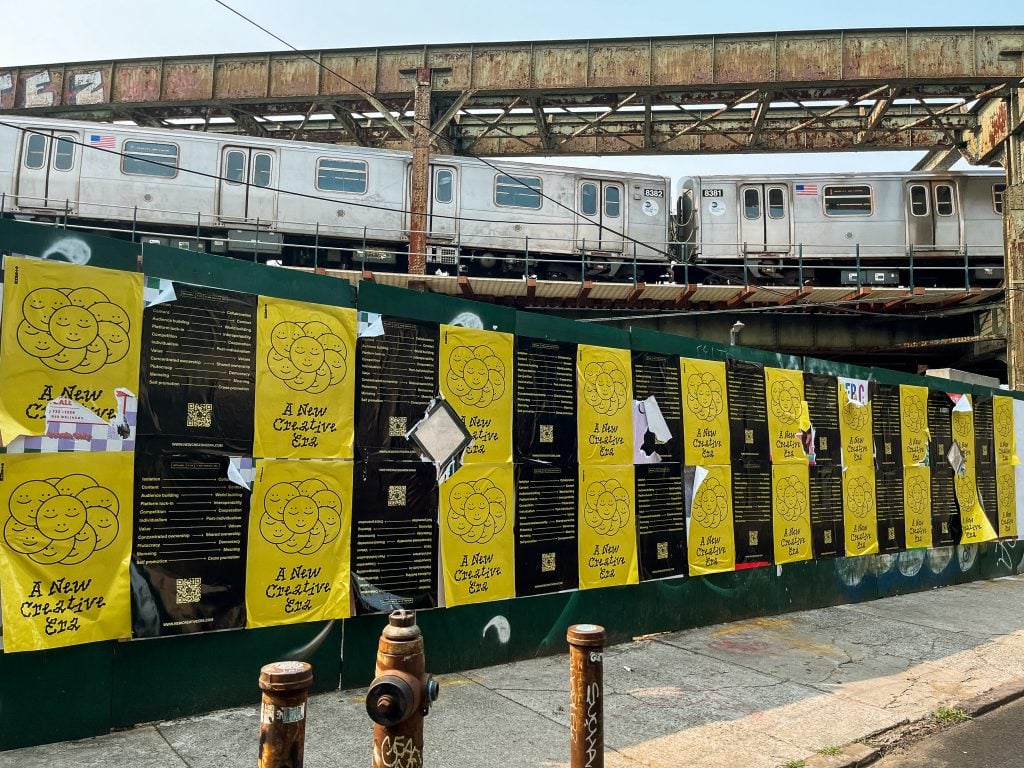By the summer of 2023, it’s become almost unbearably quaint to think back to a time when social media and e-commerce felt like spaces of utopian social possibility rather than toxic hellscapes of corporate-backed gladiatorial combat. Over nearly the same timetable, we have experienced a similar curdling of opinions about the so-called creator economy, the digital mechanisms and incentives that promised that artists across media could thrive by snubbing the gatekeepers (whether that meant gallerists, record labels, book publishers, movie producers, or other suits) in favor of building direct patronage relationships with fans.
The big problem? Outcomes in the creator economy have largely mirrored outcomes in the old offline systems: a few superstars benefit tremendously, a slightly larger cohort manages to scrape out an increasingly anxious living, and nearly everyone else tumbles into anonymity. The names might be different, but the winners-take-all dynamic remains the same.
Yet even the supposed winners aren’t exactly reveling in the spoils of victory. The past few years have seen top content creators burning out, then opting out of the online arena at a sobering rate. It turns out that the object in all that talk about “crushing it” might actually have been creators’ souls, mental health, and sense of connection to other people—even their biggest online supporters.
Now, the creator economy and the platforms that made it possible are facing a new type of competition from people intent on finding new, better ways to sustain a creative practice in a connected world. Two of those people are Yancey Strickler and Austin Robey, cofounders of a new venture called Metalabel. With its platform set to officially launch in September, Metalabel hopes to be a corrective to the shortcomings of the creator economy and traditional crowdfunding—a model that Strickler, as the cofounder and former CEO of Kickstarter, once played a key role in championing.
Since his departure from Kickstarter in 2017, however, Strickler has devoted untold hours to reconceptualizing how people (especially creative ones) can live and work together more fruitfully online. His conclusions have animated numerous projects, including his hallowed-in-digital-circles 2019 essay “The Dark Forest Theory of the Internet”; his 2020 book This Could Be Our Future: A Manifesto for a More Generous World; and most recently, in collaboration with Robey, Metalabel.
Equally informed by Strickler’s experiences as a music critic, indie record label founder, and crowdfunding czar—as well as Robey’s background in collectively owned digital culture enterprises (like the co-op music-patronage platform Ampled)—Metalabel aims to be an escape pod from what artists of all types have come to accept as the best they can do online. Where the creator economy prizes the individual, the online-only relationship, and the power of the almighty dollar, Metalabel champions the group, the social scene that flows between online and offline, and a more holistic view of success across artistic disciplines and lifestyle priorities.
If the project hits its mark, it might do more than just reshape the way creative people engage with their practice in our always-on digital world; it might also rekindle a hope for online livelihoods that no one outside of the truest believers in crypto has felt for a long time. Below, a lightly condensed and edited version of my conversation with Strickler about Metalabel.
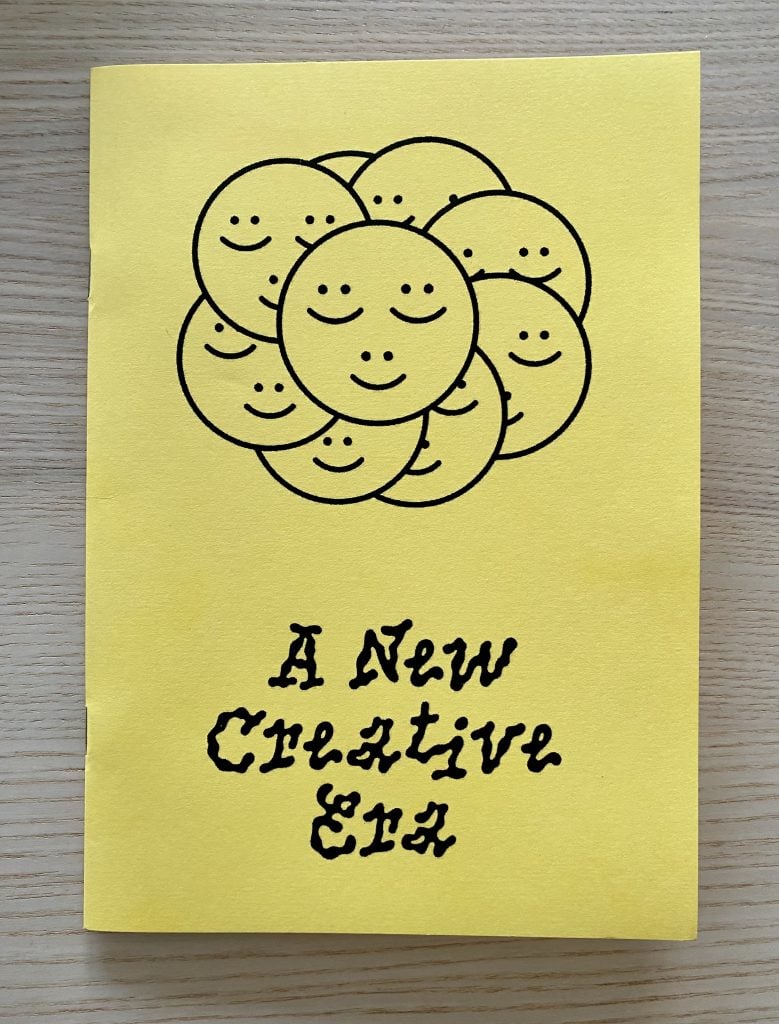
A copy of A New Creative Era, a zine produced by Metalabel and distributed partly via a newspaper box on the Lower East Side. Photo by Tim Schneider.
So from reading two of the zines Metalabel has released, After the Creator Economy and A New Creative Era, I’ve gathered that Metalabel is both the proper name of the project that you’ve started with Austin and also a common noun that you’re hoping to make a larger part of the conversation. Can you just start by talking through the difference between those two things?
Metalabel is a project that’s trying to establish new ways for creative people to collaborate and release work together. Our personal experience and what we see looking at the world is that, right now, we’re all operating in this creator economy, which is really a very single-player, individualistic way of thinking about work and what it is to succeed. On social media, online, we’re all effectively competing against each other for attention, for subscribers, for Likes, all these things. And the personal experience that I’ve had in that world is feeling jealous and anxious and not great about myself, even when I’m following my practice and doing the thing that I most love.
And so what we’re trying to establish is a more multiplayer experience of creative work, a new normal where creative people can collaborate and at least work together.
Now, this is something that creative people already do, of course, and some projects and mediums are inherently collaborative. But many tools and experiences are not optimized for that way of working. Every website assumes that we’re all individuals. And so, the outcome we’re most interested in is one where a group of individual artists—they could be writers, painters, filmmakers, philosophers, whatever their format, but who are currently right now quasi-competing [as] frenemies—that we provide the path and a clear outcome for why they should instead be more aligned and collaborative in their work.
Collaborative doesn’t mean, “Let’s ‘exquisite corpse’ this essay and just write a sentence each.” Collaborative means, when you put something out, I’ll promote you, and you’ll promote me. When you have a draft of something ready to go, I’ll give you feedback, and you’re going to do the same for me. We are creating a circle of support that is based on some common view that we share, and I have personally experienced that way of working creatively just feels better than it does being on its own.
We see this label structure, which is really taking the indie record label concept and applying it to all forms of creative output, as being a structure that’s applicable across creative fields. And especially if these are artists and creators themselves starting these projects, I believe there’s great economic results and just a great experience that comes on the other side. So “label” is the word and the analogy that most clearly speaks to what I think the desired outcome is.
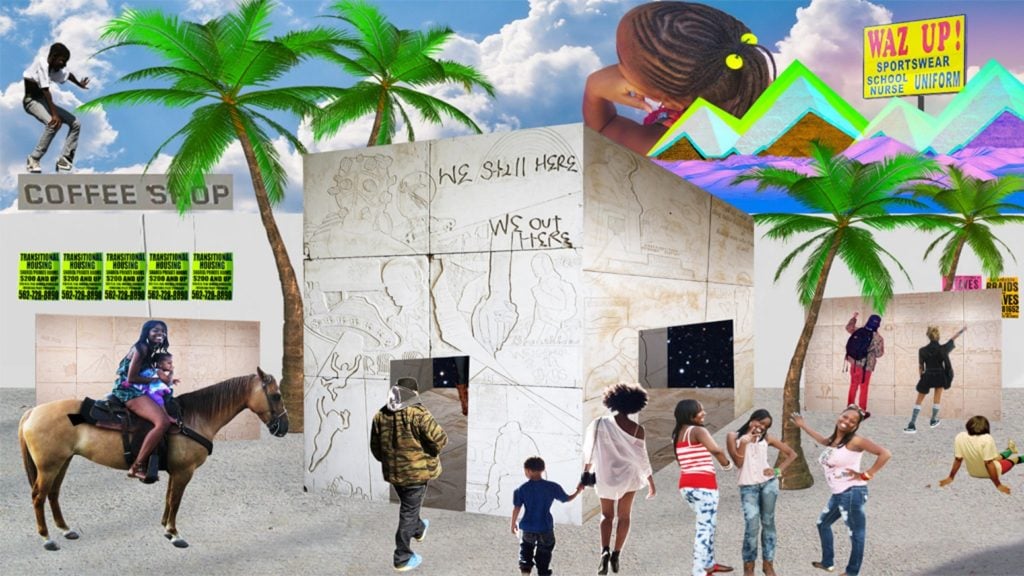
Lauren Halsey’s plan for “The Crenshaw District Hieroglyph Project” Courtesy of Kickstarter.
Everybody, I’m sure, has had their own journey to this point where they’re interested in an alternative way of working creatively. You have a very interesting one in your past as the cofounder and former CEO of Kickstarter, a platform that was really important in terms of popularizing this idea of the creator and, to some extent, the creator economy. Can you just talk about how you went from that way of thinking in the mid-2000s to now, today, the Metalabel way of thinking? Were there any signal moments or realizations?
I think when my involvement in Kickstarter began in 2005 (it launched in 2009), the big thought there was that anyone creative, to do something, they’re pitching some boardroom. Not a literal boardroom, but they’re looking for a green light from some executive to say, “Yes, you’re good enough. You can do it.” And we felt as creative people and also as superfans of so many artists that that system just makes no sense, and that there is this possibility because of the internet that you can just go directly to fans, and that is totally practical.
I think Kickstarter certainly established a different path, an independent path, a path where you can be validated not by the curation of an institution but by your fans. Before starting Kickstarter, I ran a baby record label that I started, and I watched many artists whose music I put out go on to sign to bigger labels where even the economics weren’t as good. But for them, it was about being able to say to their significant others or to their families, “This is real. I made it. I’m worth something. I haven’t been wasting my life.” And I always thought the ultimate outcome of Kickstarter would be if the success with your project could provide that same level of social validation.
I feel so proud of that legacy, and Kickstarter continues to go strong. I think what I have found over the course of the past decade is that all of these “creator economy” spaces have become really professionalized. Now you’re competing with the Barbie movie, you’re competing with everything to get attention. The bar keeps getting raised, the pressure keeps going higher. What it felt like in 2009 or 2010 is, “This is cute, let’s have fun.” Now everything feels quite a bit more existential, more careerist. There’s a lot riding on the things that we do.
I really found myself following that same creator economy path. I wrote a book that was published by Penguin Random House. So I had to do the book-circuit hype thing. Suddenly every post and every bit of media felt more weighty. And that bled into my creative work afterwards. I began to feel more and more of a sense of competitiveness with other people and projects. I just didn’t like the things I felt, didn’t like how I thought about my work—even if I was, in many ways, quote-unquote “succeeding.” I came to feel so isolated. I was just this little node in this giant sea of people who are more important than me, trying to justify my existence every day based on how many Likes I get. And it just emptied me.
It was while reading a book called Our Band Could Be Your Life by Michael Azerrad, about the history of punk and hardcore—which is a world I’ve also come from—that I started to think about the label format, especially the indie label format, as a really nice analogue. Because there’s this beautiful moment of all these great indie labels where they generally were started by some artist who would experience some success, or who would just have a different kind of sound, and because no one else would put [their music] out, they’d have to start their own label to release themselves. And that act of putting yourself out just became this clarion call beckoning other people to follow your path, to do the same thing that you were doing.
And so there’s this moment where the artist becomes a curator or a promoter of a wider idea of culture. And there’s so many examples of this in music [and other media]. Something like American Zoetrope by Francis Ford Coppola is a great example. Some of the great French New Wave films in the ‘70s were released in the U.S. by Francis Ford Coppola because he had so much financial success with The Godfather. He was like, “I want to do more. I want to teach people what cinema is versus just movies.” So often they come from those similar sorts of instincts. People just do something that strikes a chord, other people connect with it, and then through that, a scene develops.
In 2007, in my Kickstarter mindset, the most pressing concern was, “How do people fund projects if they’re not already insiders?” And I think now the most pressing concern for creative people is, “How do you feel less lonely in what you do? How can you love what you do? How can you make work and not be alone?”
Maybe we’re moving up Maslow’s Hierarchy of Needs here. Maybe this is a better problem to solve, because implicit in it is an abundance. There’s a lot of things happening, there’s a lot of creative people, there’s a lot of reasons to be inspired to make work. There’s a lot of outlets where work can go. But through that abundance comes competition and a scarcity of attention.
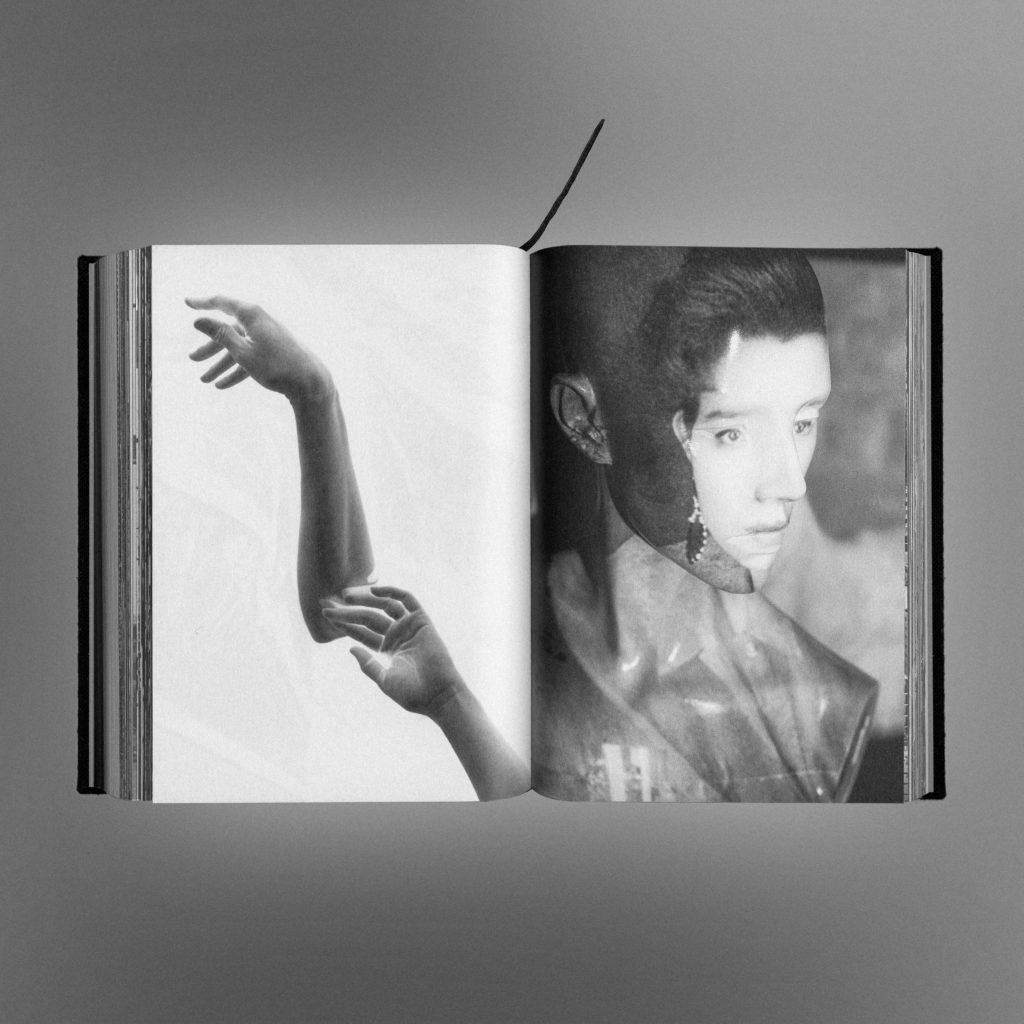
A spread from Metalabel’s fourth Quality Drop, Everything Is a Self-Portrait, a book of photos by Francis Kanai and poems by Malaya Malandro. Courtesy of Metalabel.
One thing that struck me as I was reading through the materials on Metalabel to date is just how much these other aspects of creating play into what MetaLabel’s view of success is. There’s a pretty significant presence of terms like self-care, introspection, and mutual support. It’s very much an extra-financial way of looking at what makes creative practice worthwhile, which is an important evolution from where we were circa the first decade of the 21st century.
I think that’s an on-point observation. And speaking very personally, I think this maybe reflects where in my own maturity or our maturity we are. The first time you ever publish something in print, there’s just the rush of, “Oh my god, I’m in print!” I remember grabbing so many copies of the Village Voice the first time I was in it. But fast forward six months, and then you’re like, “Why is my per-word rate so low? Why is their name bigger than my name? Why isn’t my piece above their piece?” Go on long enough, and you risk just being a misanthrope.
In the culture industries, cynicism is rewarded. We celebrate problematization, but we’re suspicious of solutionism. The farther you go in the journey, there’s less of that cheap thrill of like, “Oh my god, my name’s in lights,” and you have a bit more introspective questions of, “Do I like what I’m doing? Does this speak to me? In my limited days and years on earth, is this what I wish to be doing?” I think for those of us called to a creative practice, the answer is yes! Like, 100 percent yes, and the question just becomes, “How can I do this in a way that I don’t burn out? How can I do this in a way that I’m in touch with the Source (with a capital ‘S’) that speaks to me? How do I keep making my work better?”
There are lots of ways to do that. Mentors are great, but peers who are in the same fight, who you can do things together with, that’s fun. We all eventually get here. And now, when creative careers might begin when you’re 15, by the age of 20, you’ve been through it many, many times.
Yeah, and I feel like the experience of being a creative person online ends up being an accelerated version of being a creative person offline. If you’re Tavi Gevinson, and you start [online magazine] Rookie when you’re 15, then you’re a grizzled vet by age 25. She’s been through every war that it used to take people in publishing 25 years to get to. It changes the whole experience.
I mean, knowing Tavi, yes, that’s so true.
I want to touch on the cross-disciplinary aspect of Metalabel. Obviously, I’m doing this interview for a fine art world media outlet. As I was going through After the Creator Economy and A New Creative Era, I noticed there aren’t a lot of overt references to the gallery world, the fine art world, etc. I’m assuming that that’s not because you think that that particular creative sector is under any less pressure from these types of forces.
I always try to stay humble when speaking to the art world because it’s so vast and specialized, and I’m such a tourist. What’s the Virgil Abloh line, there are tourists and purists? I’m more tourist than purist, I think. I respect the depth.
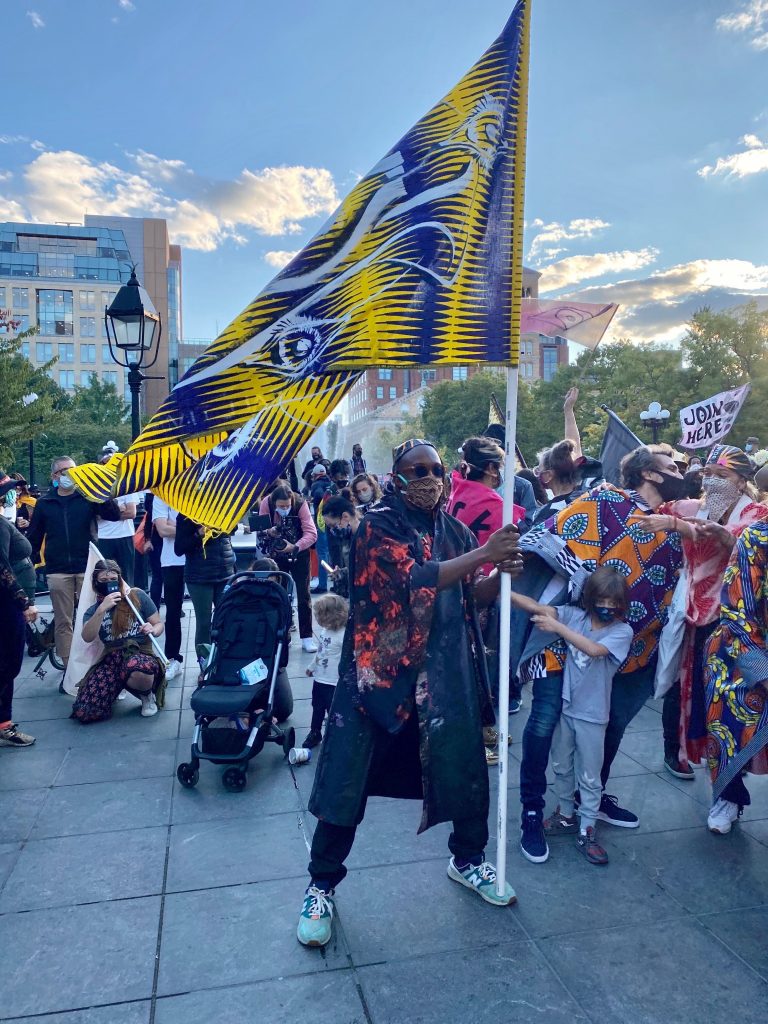
Hank Willis Thomas at a Wide Awakes rally in Washington Square Park in 2020. Photo by Sarah Cascone.
But really, the group that inspired this more than anything is the Wide Awakes, Hank Willis Thomas’s group with a bunch of great people: José Parlá, Shepard Fairey, the Roots. I’ve known Hank for years, and he invited me to be a part of that project from the beginning. And I was so confused by his invitation. I’m like, “You’re an artist. I don’t know what I am. Why do you want me to be part of your art collective?”
And he was just like, “We’re going to do lots of different things.” He shared some clips of my work to say, it’s about creating this feeling in people. And I ended up declining that invitation but kept following that project closely, and talking to him about it, and just seeing how they would go from doing something in Basel, to opening up a mobile soup kitchen in Brooklyn, to throwing a big dance party, to doing a fundraiser with capes. All of these things centering the same ideas that I know Hank and the other people in that group are passionate about: creating a different relationship between the public and art, creating more of a sense of communal participation in art and in art communities.
When the Wide Awakes are approaching [an idea], they’re not thinking, “We are fine artists and so we must operate within this context.” There’s just this wide openness. That’s what the “meta” part of our name is about. It’s saying that to be a creative group today isn’t to bind yourself to a specific vertical or medium. It’s about putting out creative work in whatever formats seem viable to reinforce your worldview. And the more creative you can be with that, the more your work is going to travel.
It seems like you and Austin bring some of that genre-agnosticism into Metalabel itself based on your backgrounds.
We just made a hire at Metalabel last week, a woman named Gina Pham, who was the head of operations for Opening Ceremony’s stores from the very beginning, then did the same for BDDW, which is a great artist-led furniture store, as well as Powerhouse Arts in Red Hook. She has worked in fashion, fine art, design, physical retail, and just knows how to execute and how to create very high-level creative output across any medium. We recruit and look for a person like that because we want to express ourselves in ways that we currently don’t know how to.
And so, to me, what’s exciting about the next decade of creative output is that I think those lines get really blurred. Things like Pharrell [Williams] as the head of L.V. [Louis Vuitton] are emblematic of the way culture is moving. But I think it’s less about one person being a hyphenate with 10 different [roles] and more about 10 different people coming together and creating a collective hyphenate that’s able to express work however they come up with it.
We’re all brought up online. There’s this huge context collapse, and everything is in the same space. We just think this way now. Increasingly, we’re going to be making work that way. And most platforms and tools at this moment aren’t ready for that. They’re still thinking about, “Well, this is a music site. This is where you watch movies. This is where you post pictures.” As you can see by the accounts we have on so many different platforms and spaces, that is not the lived experience that any of us have.
Another plank in Metalabel’s concept seems to be that it’s really important that an offline scene develops around something, that we interact in physical spaces, that we go to live events. Can you talk about that aspect?
The web is obviously the greatest communication and distribution system that’s ever been invented beyond maybe the human mind itself, but we were a Covid-era project of all remote [work], and last winter, I moved back to New York, and Metalabel got a space on Canal Street on the Lower East Side. The intention there was very explicit: We wanted to be from someplace. We wanted to have a home team. We wanted to be a part of something that’s real.
It’s just so easy on the web to unsubscribe, to opt out, to mute, to unfollow, and it’s just like your whole world is getting rejected. These are benefits and, at times, limitations of the digital world. But in the physical world, you’re stuck together. You see each other, you get to know each other, and it’s not just avatars ego-posturing. It’s someone you see at the bodega or run into at an opening.
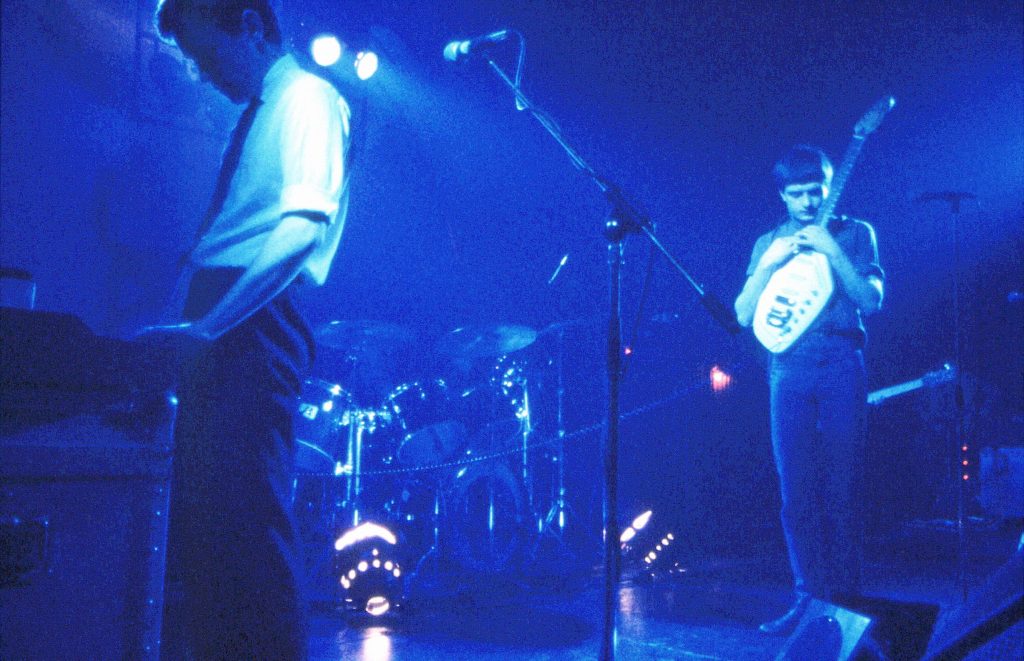
Lyceum photo of Bernard Sumner (L) and Ian Curtis (R) of Joy Division performing live onstage. (Photo by Chris Mills/Redferns)
So our space on Canal Street, we’ve been hosting events there, and we’ll do more and more of that. We’re very inspired by Factory Records, the Manchester-based label that put out New Order and Happy Mondays and Joy Division. Twenty-four Hour Party People was about Factory Records. In their catalog is release number 51, which is the Hacienda nightclub. The idea of a record label dropping a club as one of its releases, and it’s in their catalog between two 12-inch [L.P.s], is really cool. Because it’s saying, “Well, our goal is to stand for Manchester music. The way we do that is we make the best club in the world be in Manchester. We have people play there who are purely inspired to make music. This will create the next decade of Factory’s roster.” And it really did!
And for us, creating our space, which we call 99C, and imagining it as a place where the internet is IRL, a scene where other scenes can begin—that just felt true to this project. If we can establish ourselves as being good neighbors, legit thinkers, people that put out good work with some of the most talented and discerning creative people in the world—meaning New Yorkers see it as legitimate—that’s just a great place to start from. We want to make something real and not just be a trending hashtag that people slowly unfollow if we’re not producing enough material.
How much is, if at all, is crypto embedded into the concept of Metalabel? Because a lot of this ethos of digitally informed collectivity and community sounds a lot like the rhetoric from NFT and blockchain circles over the years.
I think crypto is not deeply embedded in this. The project was gestating during the DAO hype wave, which I never opted into. I never thought DAOs were a real phenomenon. But I think that crypto wave inspired a lot of people to create a space to ask bigger questions, to say, “How much of this is true?”
We did a series earlier this year called Quality Drops, where we collaborated with 20 labels and groups who release work, like photography books, poetry books, zines, film screenings, concerts, white papers, journalism, research. They’re all funded through this. These 10 releases made more than $1 million dollars across them. And all these releases made a version of their output available as an on-chain artifact. But most of them also still have their work [available] through just a normal e-commerce link or like a “download the PDF for free” option.
In the fall, we’re launching the Metalabel platform, which reimagines the idea of the indie record label and applies it to all forms of creative output. It will be a self-serve tool that will let people create a group together around their shared vision. They can publish, release, and sell work across formats and mediums, one option of which will be on-chain, but there will be three others that are not on-chain. And then our tools will let them share revenue, fund work by themselves and others, and just make more and more collaborative releases. None of those things will require a blockchain or push people to buy crypto. It will be a way you can choose to sell your work, but not the only one.
What’s next for Metalabel? Anything that will help people understand how labels work differently from a financial or community standpoint than what they’re used to?
In about three weeks, we’re going to announce our next drop. This will be Metalabel’s ninth release, called Advance Pool. This is going to be a $100,000 regenerating fund of money that will be open for anyone creating a collaborative creative project to apply to. By receiving an advance, you agree that you will release that work through Metalabel. And then, once your work goes live, the revenues from that work are split 50/50: 50 percent to the artists behind the work, and 50 percent back to the Advance Pool until that advance has been paid back. After which, all the money will go to the creators minus a platform fee.
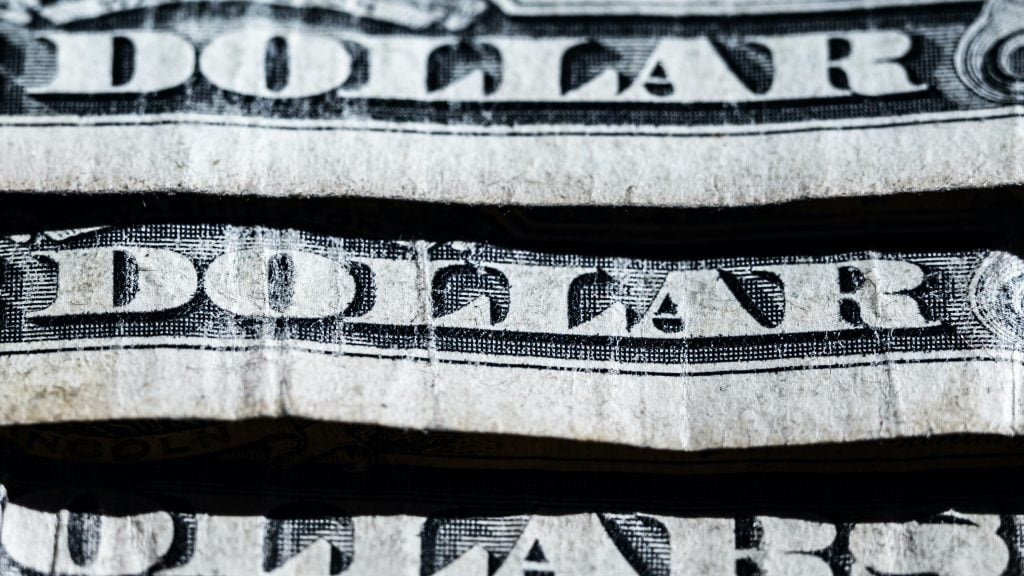
Extreme close-up of U.S. dollar bills layered on top of one another. Photo: Silas Stein/dpa (Photo by Silas Stein/picture alliance via Getty Images)
The idea is, can we create a pool of money that keeps growing? Can this still be funding projects three years from now, and hundreds of people go through this, and we’re just cycling through the same funds with each other? We’re very excited about that as an experiment, just to see how it goes. Should that work, I view the Advance Pool structure basically as a product that we would offer to any label.
It’s a way that we can replicate what I think are some of the best aspects of the record label publishing world, [without] their drawbacks. In publishing, and especially in music, advances will often come when you have to give up your I.P., you get into these weird royalty point systems where you never quite know where you stand. There’s all these things charged against your advance, where you never know when it’s paid back because of shady accounting.
Here, we tried to design something that’s transparent, simple, with no exchange of I.P. or ownership, and no limitations on the work. We’re just trying to make it easier for groups of people working on something to have the resources they need to do that.
So that’s going to be a very long experiment. It could go great, it could go horribly. We’re viewing through the end of the year as being the first season. And then we’ll do a public accounting that says, “Hey, here’s how much money got returned. Here’s the state of this. This is going to keep going, or we’re going to make a few changes, or this was the worst idea ever and we’re shutting it down. Forget this happened.” But we’re excited about that.
Is there anything else that you think is important about Metalabel that we haven’t covered by now? What’s the trajectory you’re hoping for?
If I look at our experience in the past year and a half, to me there’s lots of evidence that this is something creators connect with, want, and are inspired by. We’ve had more than a thousand creators and collectives apply to be a part of Metalabel, [despite them] not knowing what we’re doing. We’re trying to create tools and opportunities that let more people make this same leap, and I would expect a couple years from now, we’ll be here talking about, “Wow, this whole collaborative thing has really happened. Now there’s like five places doing this. How are you competing against them?” I think increasingly people are going to see this as a normal, obvious step.
With crowdfunding, something that we found really hard to explain when it was in the ideation state became as natural as air once it was on the web. I think there’s going to be a similar sort of experience with Metalabel. A lot of these ideas are going to feel very clear once people can experience them for themselves. And then we’ll find out what the next problem is on Maslow’s Hierarchy of the Creative Person.
